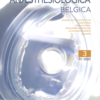Recognition and diagnosis of acute type A aortic dissection in a large Belgian referral center – can we do better?
Aortic Dissection, Diagnosis, Platelet Aggregation Inhibitors
Published online: Dec 03 2022
Abstract
Background: Acute type A aortic dissection (ATAAD) has a poor prognosis unless promptly diagnosed and surgically treated. As ATAAD is relatively rare and clinical presentation may mimic other pathologies, diagnosis can be challenging.
Objectives: The aim of this study is to evaluate the difficulties in diagnosing ATAAD.
Methods: A monocentric, retrospective analysis was conducted of all patients undergoing surgical repair for acute type A aortic dissection in our hospital (a large Belgian referral center) between the 1st of January 2016 and the 31st of December 2020. Data were collected regarding patient’s demographics i.e. age and gender, time of first medical contact, referral from other hospitals, presenting symptoms, initial diagnosis, inappropriate antiplatelet or antithrombotic therapy, time to the correct diagnosis, time to initiate surgical repair, and one- year mortality.
Results: Thirty-three patients were included. We found that a correct initial diagnosis was only made in twelve percent of patients with ATAAD. In twenty-one percent of patients, misdiagnoses led to inappropriate administration of antiplatelet or antithrombotic drugs pre-operatively. There was a difference in time from first medical contact to initiation of surgical repair between referred and non-referred patients. This time interval tended to be shorter in the latter group.
Conclusions: The main finding of this analysis is the delayed diagnosis of ATAAD in the majority of patients. This trend is slightly higher in patients referred from other hospitals. To improve outcome in ATAAD, efforts should be made to increase awareness for the presenting symptoms, and appropriate diagnostic imaging should be performed in a timely manner.
